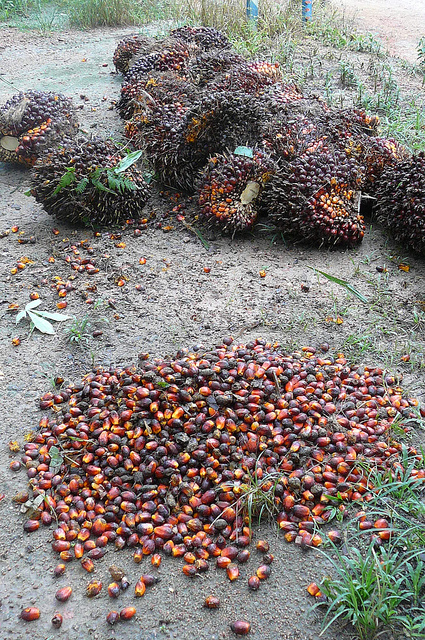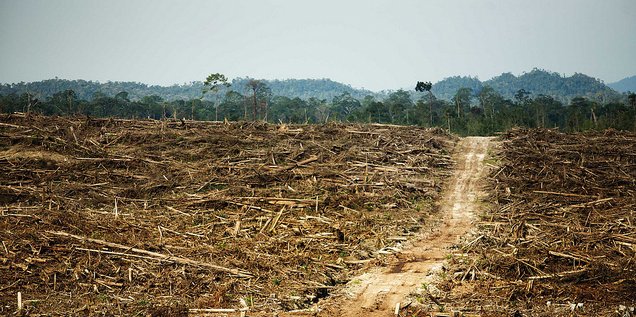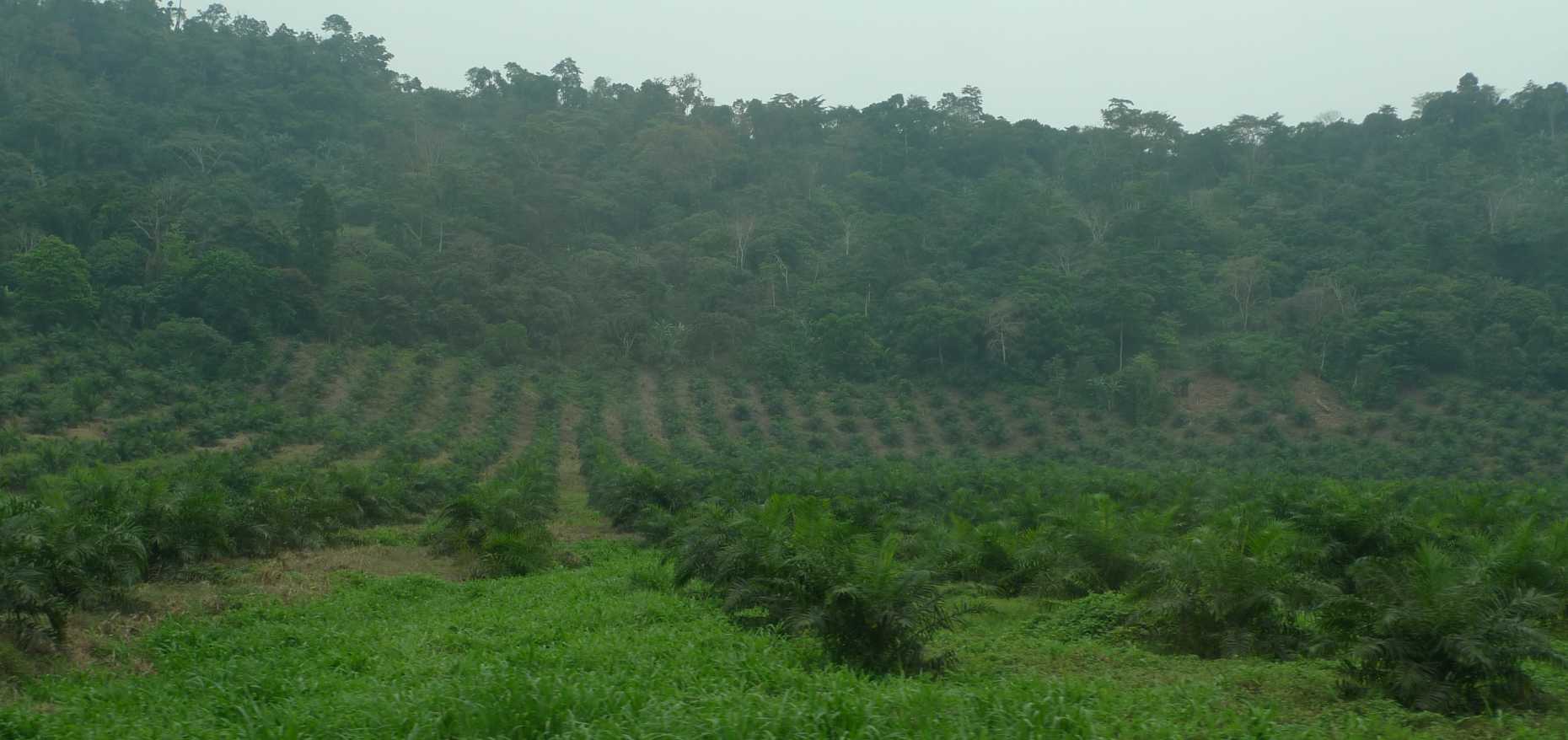Oil palm in Africa: an opportunity too good to miss?
After becoming Southeast Asia’s second-largest crop, oil palm is heading to Africa on an industrial scale, and a wave of high-profile investments have raised concerns on the environmental impacts of this expansion. Understanding the opportunities for oil palm in the African context is key to ensuring that oil-palm expansion develops more sustainably.
The total area planted with oil palm has increased rapidly worldwide in the last 30 years, from 4 million hectares (ha) in the 1980s to more than 17 million in 2013. For the past decade, oil palm has therefore been a hot topic of debate in academic and non-academic circles. As a reader you may have already encountered this discussion in the news [1], or seen the striking campaigns by many advocacy groups [2] that question the social and environmental impacts of the dramatic expansion of oil-palm industry, especially in Southeast Asia.
Evironmental concerns over profitable investments
Despite the constant bad press given the potential environmental impacts of oil-palm expansion on forests and biodiversity, interest in oil palm is increasing from governments and private sectors in other regions, such as Western and Central Africa. They argue that because of its high profitability, one of the highest among the global agro-commodity sector, oil palm can provide much-needed investments in infrastructure, public services and job opportunities in rural areas, many of which are not suitable for other crops.
However, numerous conservation and environmental organizations [3], as well as academics [4], have raised concerns regarding the wave of oil-palm investments on the African continent, due to the history of environmental degradation caused by oil-palm expansion in Southeast Asia. The situation is more worrying because of the limited efficacy of many of the current sustainability initiatives in the oil-palm industry. In Indonesia and Malaysia, at the heart of the global efforts to stop deforestation, oil palm remains one of the main drivers of forest loss [5], threatening the survival of thousands of species.
Oil palm’s homecoming to Africa

Large-scale agriculture of this crop was first developed in Southeast Asia, where the international palm-oil trade now plays a central role in the national economies of Malaysia and Indonesia. The oil-palm tree, however, is native to western Africa, where it was first domesticated 5,000 years ago. It is reported that considerable areas exist on this continent, but oil-palm production there remains mostly artisanal and for local consumption. This situation, however, may be a key opportunity for the sustainable development of the oil-palm sector in this region.
For instance, let’s take Nigeria, where up to 2 million ha are reported by the Food and Agriculture Organization of the United Nations (FAO) [6] to be planted with oil palm. This is a considerable area, and even though it may not be comparable to the 7 million ha planted in Indonesia, it is still globally significant. The interesting fact is that for Nigeria, the FAO reports an average yield of 2.5 tons per ha, which is equivalent to 15% of the average yield obtained by producers in Southeast Asia. This situation is not unique to Nigeria. Overall, countries in Africa seem to have 50% lower oil-palm yields than their Southeast Asian or South American counterparts, even though in theory their yield potential should be approximately equivalent. Although these figures are probably very coarse, they indicate that there is lot of potential to increase oil-palm production by closing this yield gap – an opportunity that may allow the oil-palm industry in Africa to realize its production aspirations while minimizing its environmental impact.
Filling in the knowledge gaps
To realize this opportunity, there are some knowledge gaps that need to be addressed. The first step is the characterization of existing oil-palm plantations: mapping their locations and quantifying their extension and production levels. Secondly, to estimate the real potential for yield improvement, we need to understand current production systems in these areas; this can be done by assessing the suitability of the land to this crop, the different farmers’ management practices and the role of this crop in their livelihoods. Filling in these knowledge gaps will provide the foundation for developing adequate policy frameworks that can meet production targets and benefit existing producers. Mapping current locations of oil-palm plantations and using sustainability criteria to assess the suitability of the land for oil-palm expansion can facilitate future spatial plans for oil-palm expansion, and minimize its impact on habitats that provide important ecosystem services and act as refuges for biodiversity.
Oil palm might indeed be economically beneficial for African countries, but perhaps the most valuable opportunity for oil-palm expansion on this continent is for nations to forge their own socially and environmentally responsible expansion programmes, tailored to their climatic conditions, agricultural systems, livelihood aspirations, and biophysical landscapes. This is an opportunity that many of their counterparts in Southeast Asia missed.
This blog post was co-written by Janice Ser Huay Lee.
References
[1] Tages-Anzeiger externe Seitearticlecall_made, Guardian externe Seitearticlecall_made
[2] Campaign: externe SeiteExamplecall_made
[3] A externe SeitePolicy Statementcall_made from the Section on Great Apes (SGA) of the IUCN SSC Primate Specialist Group
[4] Wich, S. A., et al. (2014). "Will Oil Palm's Homecoming Spell Doom for Africa's Great Apes?" Current Biology 24(14): 1659–1663.
[5] Abood, S. A., et al. (2014). “Relative contributions of the logging, fiber, oil palm and mining industries to forest loss in Indonesia”. Conservation Letters. doi: 10.1111/conl.12039
[6] FAO, Statistics division. externe Seitehttp://faostat.fao.org/call_made Accessed 27.09.2014



